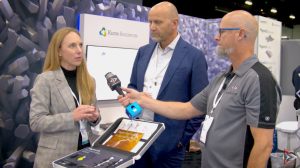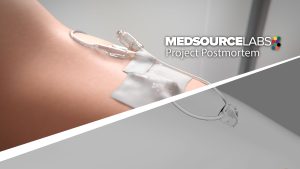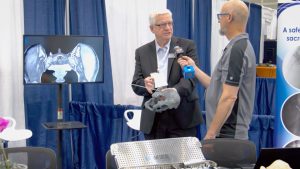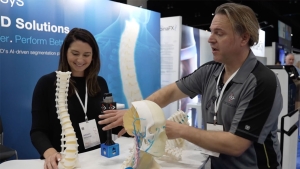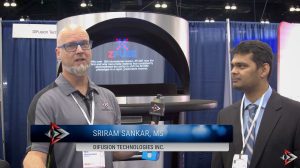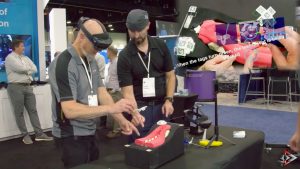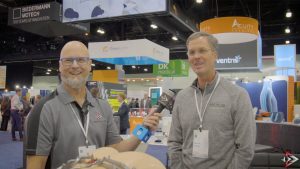In the bustling heart of Los Angeles, the North American Spine Society’s (NASS) annual conference unfolded, setting the stage for an exciting revelation in the world of spine surgery. The event served as the perfect backdrop for Doctech.live’s exclusive interview with Dan McPhillips, Director of Enabling Technologies and Market Development at Captiva Spine, a medical device company that’s making waves with its revolutionary WatchTower™ Spine Navigation and Robotics System.
Doctech.live, a prominent Med-Tech Innovation Report and journalism platform sponsored by Ghost Productions Inc., had a mission to deliver cutting-edge insights into health and medicine. At NASS 2023, their mission was brought to life as they sat down with Dan McPhillips to discuss the incredible advantages that the WatchTower™ system brings to both doctors and patients.
A Leap in Surgical Innovation
The WatchTower™ Spine Navigation and Robotics System is a game-changer in the field of spine surgery. It seamlessly merges pre-operative CT scans with 2D imaging through a sophisticated algorithm, providing real-time 3D images of the patient’s spine during surgery. This groundbreaking technology eliminates the need for intraoperative 3D imaging for registration, reducing operative time and radiation exposure for patients and staff while enhancing the safety and efficiency of spine surgeries.
Dan McPhillips expressed, “So this is the WatchTower navigation system. WatchTower is unique. It uses a 2D registration method to get you a 3D navigation. So, in an ASC environment, you do not need to purchase an intraoperative CT scanner, nor do you have to do an open exposure to touch the spine or take a picture of the spine to register. It economically solves the problem of not buying a CT scanner and procedurally solves the problem of still performing percutaneous procedures. It’s faster, cheaper, and significantly smaller than anything else that’s out there.”
The Ideal Client
Captiva Spine’s ideal client for the WatchTower™ system is a surgical group or a community-based hospital aiming to provide a navigation system for spinal procedures without the need for a costly intraoperative CT scanner. This innovative system opens doors for facilities with budget constraints, enabling them to offer state-of-the-art navigation for their patients at a more reasonable cost.
Peerless Innovation
When asked about competitors, McPhillips confidently stated, “I don’t have a closest competitor. I’m peerless now. This technology is not greatly dissimilar from anything else that’s out there in terms of navigation. But where this has no peers is in how it is registered into the operating room. There’s not another system out there that can register a CT scan for a spine procedure without using touch registration or an intraoperative CT scan.”
Training Simplified
The simplicity of the WatchTower™ system extends to its training process. McPhillips explained, “Anybody can do it. This is a very, very simple registration method. It’s an image recognition software. When you are ready to start the case, you have your CT scan loaded, take an AP and a lateral x-ray, and the operator just matches the CT scan to the x-ray. It’s literally drag and drop.”
Captiva Spine’s Journey
Founded by Dale Mitchell 17 years ago, Captiva Spine has been a pioneer in workhorse technologies in the medical industry. The company has a rich history of developing cervical platting, pedicle screws, cages, and more. The WatchTower™ system is Captiva’s latest offering, and it’s poised to be a requirement in the future of spine surgery.
As McPhillips succinctly put it, “Everybody coming out of medical school and fellowships now is committed to navigation. So, if companies aren’t getting into the navigation market, they probably won’t be around for long.”
NASS: A Beacon of Progress
Throughout its 35-year history, NASS has seen its fair share of ups and downs. However, events like NASS 2023 remain crucial to the spine surgery field. The WatchTower™ Spine Navigation and Robotics System, with its precision and radiation reduction capabilities, exemplify the progress that NASS helps foster in the industry.
In conclusion, Captiva Spine’s WatchTower™ Spine Navigation and Robotics System represents a significant leap in spine surgery technology. Its advantages for both doctors and patients are undeniable, and its simplicity and affordability make it a game-changer for surgical groups and hospitals alike. With no close competitors, this innovation shines as a beacon of progress at events like NASS, pushing the boundaries of what’s possible in the field of spine surgery.




